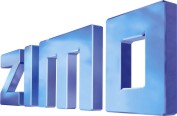Zimo
Manufacturer: Zimo
Summary: ZIMO has been manufacturing digital command control systems since 1979. Their first system could operate 99 trains and featured 16 speed steps.
| See more Manufacturers | |
|---|---|

| |
| General information | |
| Phone | |
| Fax | |
| CV8 ID# | |
| Main URL | Main URL |
| URL to manuals | |
| Address | Schönbrunner Straße 188, A – 1120 Vienna Austria, Tel: 00 43 1 813 10070 |
| Date Opened | 1979 |
| Date Closed | |
| Successor | |
| Device Types | Other, Booster, Command Station, Mobile Decoder, Power Supply, Stationary Decoder, Throttle |
History
(Translated from German)
In 1978 ZIEGLER & MAIR was founded, later in 1980 the company ZIMO ELEKTRONIK was founded, initially as a part-time activity of the owner (Peter W. Ziegler), becoming his main focus in 1987.
ZIEGLER & MAIR or ZIMO has been involved in the development and production of digital control systems for model railways from the very beginning.
1979: The first systems were sold, base unit BGT1, control panel FP1 and vehicle receivers. The terms "base device" and "driving console" have been used since then and will continue to be in use for many years.
Within the ZIMO digital systems of the 1980s and 1990s, signal-dependent train control was a unique selling point, then advertised as a combination of the train driver and the conductor function, later generally accepted as an HLU method.
In 1990, the first SMD (Surface mount Device) pick and place machine was purchased, replaced by a more modern system in 1999.
Until 1996, ZIMO products were based exclusively on the independent ZIMO data format (as it was subsequently called), then changing to NMRA DCC.
In 2009 a completely new production plant (stencil printing, assembly, reflow soldering furnaces) was built. A little later an AOI (Automatic Optical Inspection) system was purchased to streamline production processes and further increase the reliability of the delivered products.
From 2011, ZIMO increasing became a decoder supplier for the model railway industry. The decisive factor for this was the flexibility which was made possible by production in-house.
In the years after 2016, system technology came to the fore again, with the MX10 base station, control console MX32 and the stationary device modules StEin.
2019 saw the introduction of the MS decoders, a new class of sound decoders, which set new technical standards.
Description
They began manufacturing NMRA DCC systems in 1994.
The Zimo MX31ZL cab has a USB socket for software upgrades, via connection to a computer or a memory stick.
The system employs a throttle network they call Can Bus.
Zimo DCC Products
For a listing of their products, see the Zimo Products page
The Zimo website has only German language pages for their starter sets.
HLU
Zimo offers a form of automation often called HLU, or Signal Controlled Speed Influence. It has been in development for over 30 years, and offers a number of features.
ZACK
Zimo introduced a technology, Zugnummernimpulse or ZACK (Train Number Impulse), supported by DCC in 1998, which is similar to RailCom.
See Also
Control%20DCC%20system.aspx Zimo Electronik MX31ZL] Digital Command Control (DCC) system on Trains.com
References to this Manufacturer
Zimo FAQs
Q: Is there a list of Configuration Variables used by Zimo multifunction decoders?
There is a list of CVs employed by Zimo for their multifunction decoders.
The list is available here: CV List.
This document is dated 2014. Registered DCWiki users can update this page if a more recent list is available.
Edit FAQ Related Articles: Decoder Programming, Configuration Variable Related Manufacturer: Zimo Categories: Multifunction Decoder, Programming
Q: Zimo Decoder Hard Reset
At times Zimo multifunction decoders may no longer respond, or cannot be programmed or updated.
This often occurs with older firmware. In these cases, revive the decoder via the following sequence of CVs.
This process requires using Service Mode Programming, following this sequence exactly. No other process such as reading CVs can occur between steps. The command station must set the CVs directly. Command Stations such as the Marklin MS2 or Roco Multimaus, which read the CV before programming, cannot be used.
- CV 7 = 0
- CV 31 = 0
- CV 32 = 0
- CV 8 = 8
- CV 15 = 0
- CV 16 = 0
- CV 8 = 8
- CV 144 = 0
This process should be successful if the decoder software is the root of the issue. Defective hardware requires returning the decoder to Zimo for repair.
Edit FAQ Related Manufacturer: Zimo Categories: Multifunction Decoder, Programming
Q: What is Swiss Mapping?
Swiss Mapping is a variation on lighting functions and their control.
From Nigel Cliffe's Blog:
For the lighting outputs, I'll use Swiss Mapping. Not because the locos are Swiss, but because its a really powerful and flexible way of controlling lights. To control which sounds (and any other features) are controlled by which function keys is done with Zimo Input Mapping. I'm assuming the use of DecoderPro. It can all be done with manual CV numbers, but it takes a fair bit of typing.
Also see the page on Functions.
Edit FAQ Related Articles: Functions Related Manufacturer: Zimo Categories: Multifunction Decoder, Programming